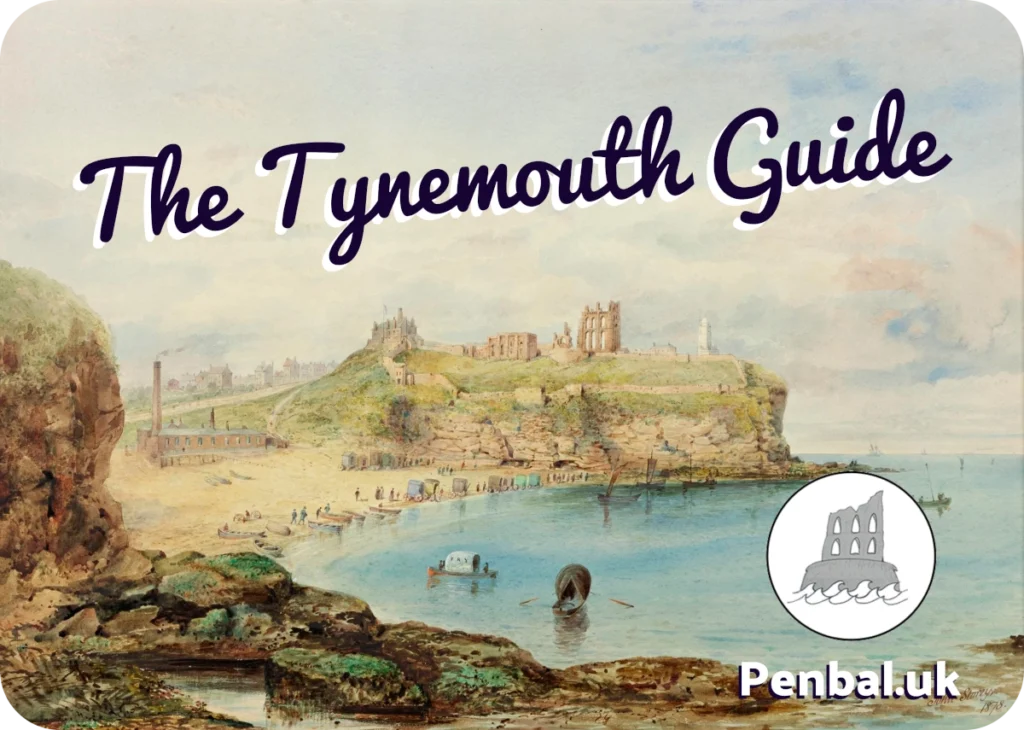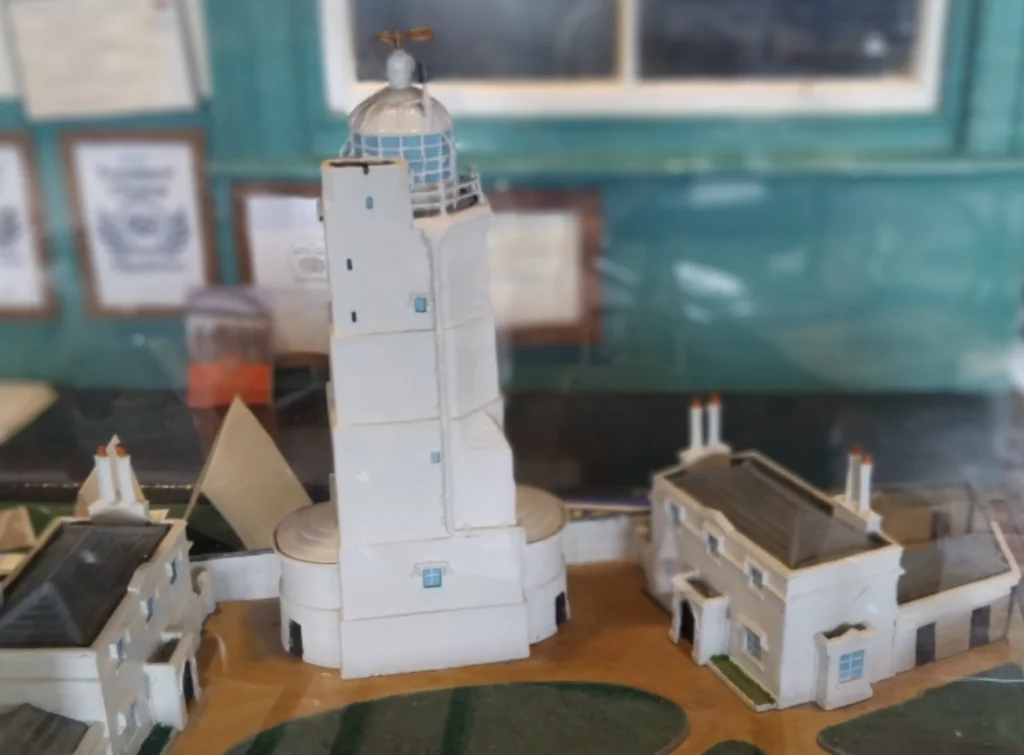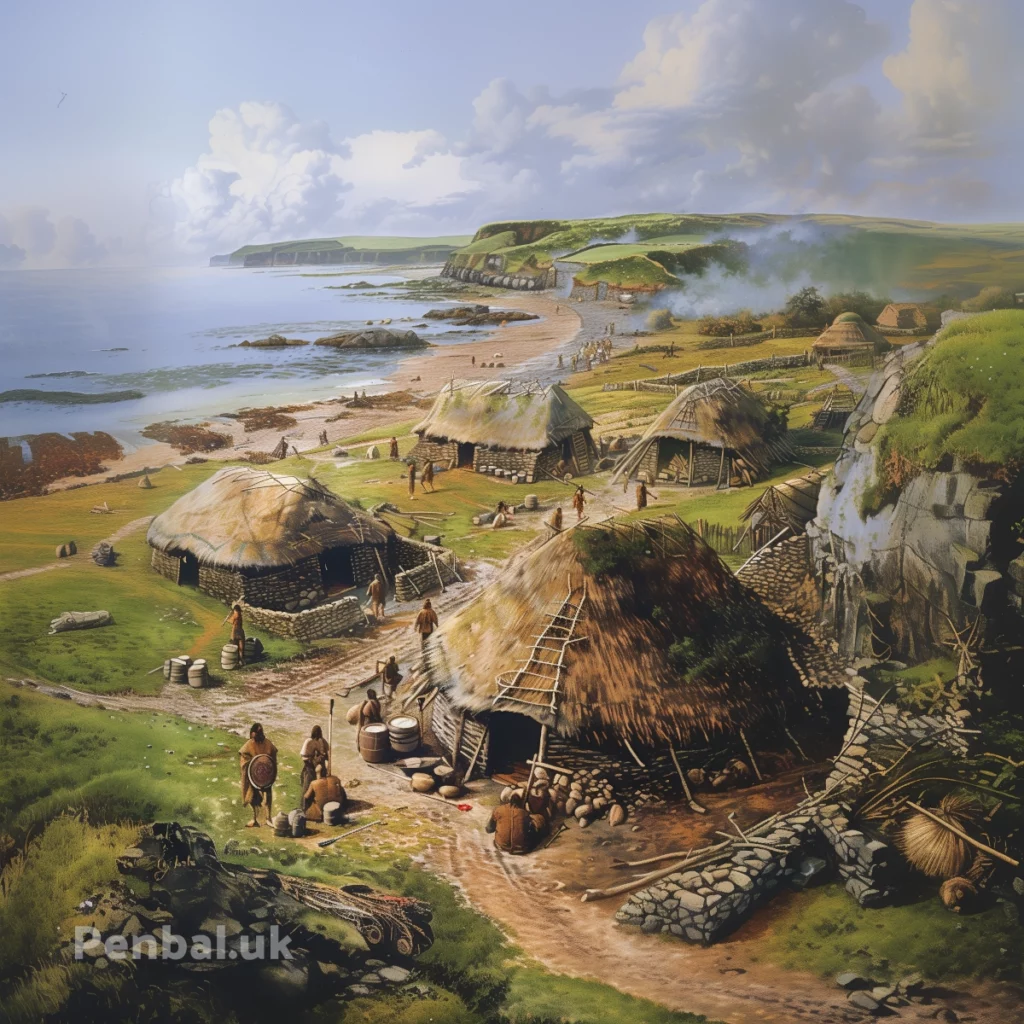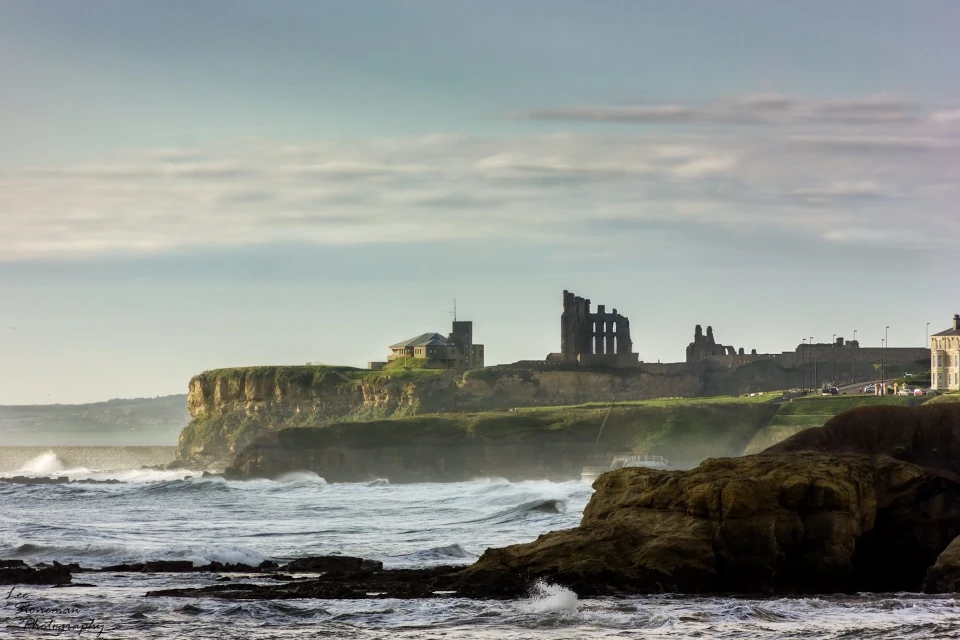Tynemouth Guide
Tynemouth Castle & Priory
18. Battlements
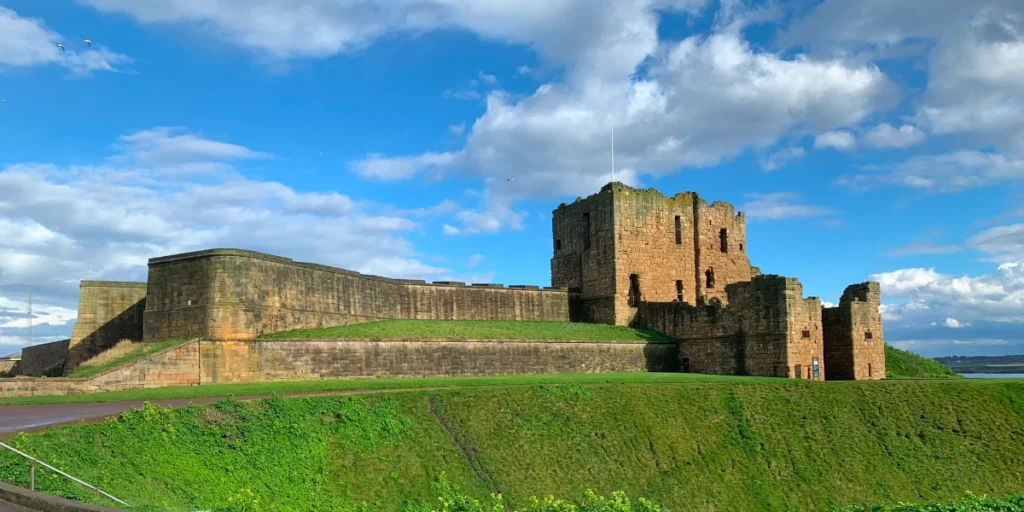
The view we have of the Castle Gatehouse and its commanding battlements on either side, overlooking the moat and staring down Front Street, is not how the place looked in its early history. The Norman motte and bailey castle occupied a small mound in front of the present Gatehouse, and it wasn’t until Tudor times that the Castle banks were built up to the height they are now.
19. Great Hall

The Castle Gatehouse is home to the Great Hall, which is where the medieval banquets took place. It was the main social space and a great deal of business would have taken place here. Those walls must tell some stories…
The Castle had to be fit for royalty, as nobility could arrive at any time and therefore it would have been decorated in the pinnacle of luxury for its day, with fine rugs, ornate tables and chairs and rich tapestries hanging from the ceiling. Above the Hall was the Great Bedchamber, and both the Hall and the Bedchamber featured huge roaring fireplaces. While to the side of the Hall is the Great Kitchen, where meats would be roasted in the massive oven and prodigous amounts of food prepared.
20. Crenellation
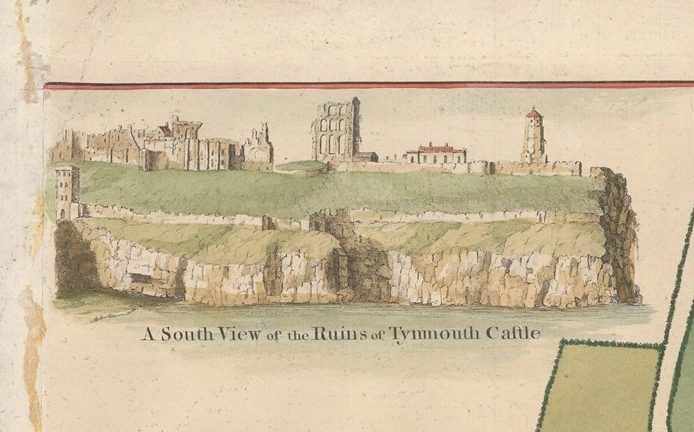
The walls around Penbal Crag were a thousand yards in length and fortunately a good amount of this structure remains. Edward I was the first King to grant a license to crenellate the Castle and much of the Castle’s appearance dates from this time of the 1290s and early 1300s. Edward I of Braveheart fame is known historically as the ‘Hammer of the Scots’ and was the greatest castle builder in the history of Britain. He viewed Tynemouth Castle and the protection of the Tyne as vital to the kingdom and for this reason he spent a lot of time in Tynemouth and granted many rights and freedoms to the Prior.
Crenellation was a huge deal for the place, as it’s potentially risky to fortify a site that an enemy could at some point occupy. The enemy at this time was Scotland. Scots armies were regularly raiding Northumberland and laying waste to its towns, including Tynemouth. Crenalltion therefore not only protected Tynemouth, but gave King Edward a base. He mustered his ships here and the Castle was home to his wife and their entourage while he was campaigning against the old enemy.
21. Gunnery
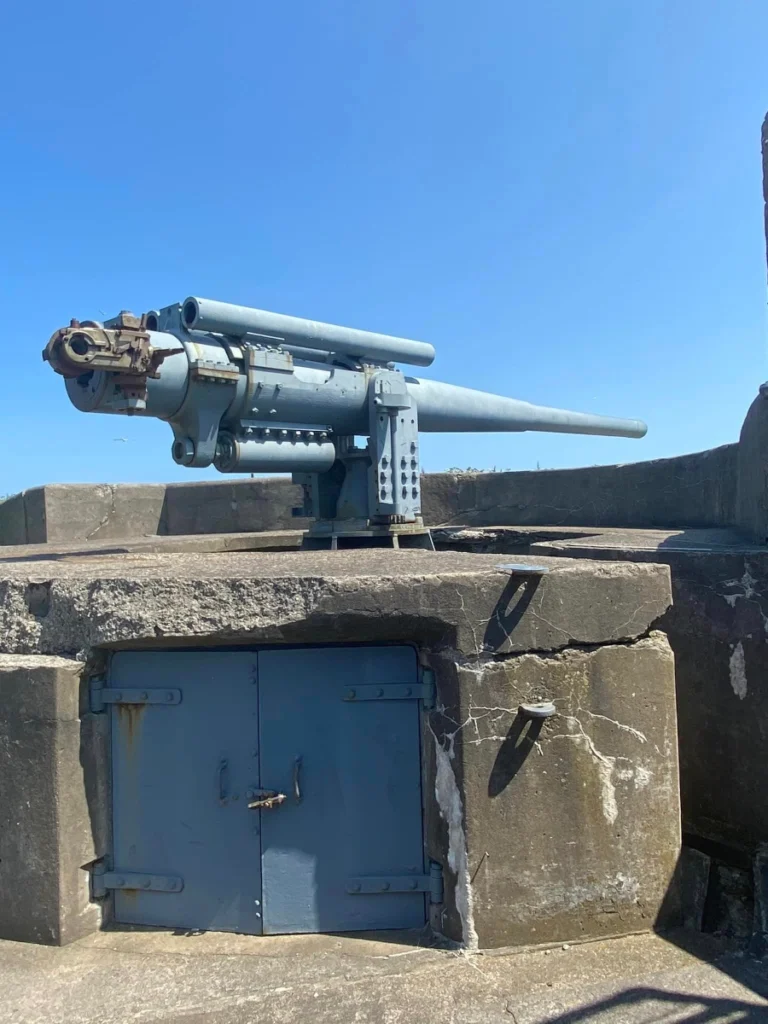
Penbal Crag has always been a dual purpose site. It is both a place of religious significance and a defensive stronghold. At the east edge of the headland you can explore the old HM Coastguard building and the WW2 gunnery, where the fraught work of loading shells into the great cannons that covered the Tyne entrance took place.
Despite bombs being dropped in Tynemouth and North Shields at various times during the War, no shots were fired in anger from the Tynemouth batteries, although the defences at South Shields did see action on one occasion.
Both the Castle gunnery and the Spanish Battery on the other side of Prior’s Haven were cleared of their barracks, searchlights and gun emplacements by the MoD in 1956. The Coastguard building to the south of the gunnery, built in 1982, is very much a Cold War edifice and was decommissioned in 1997.

22. Lighthouse
No lighthouse exists on Penbal Crag today, but there has probably been a beacon on the headland since at least Early Medieval times. It was known as Mary’s Light after the chapel at the Priory. Stella Maris, Mary’s Star, is the guiding light for seafarers.
The first lighthouse was built by Edward Villiers in the 1660s. It was rebuilt in the 18th century and was known for its red light. In the 19th century, the newly built North Pier made the lighthouse redundant, so on August 31st 1898 it was extinguished, as soon the gleaming state-of-the-art lighthouse on Bates Island to the north of Whitley was put into service.
23. Iron Age Settlement
The entire lump of earth the Castle and Priory sit on is called Penbal Crag. This is a Celtic name meaning ‘Strong Head Rock’. At one time what is now the Welsh language was spoken all across England, and we know that the Celts were living here before the Roman period.
In 1963 there were two large Iron Age roundhouses uncovered on the Priory site, and there are probably more of these under other parts of the headland which haven’t been unearthed.
The archaeologists found a lot of shellfish, so it’s clear the people here were living on mussels, welks and oysters. At a certain point there’s an amount of Roman pottery on top of these remains, so it’s suggested that the settlement became Romano-British.
Except for these pieces of pottery and some coins, we don’t have evidence of a large Roman settlement here, and Hadrian’s Wall didn’t go to the sea, so it can be assumed that the people of Tynemouth were friendly and civilised. These people obviously had some interaction with the Romans and there would have been some trade, perhaps trade in wine. Tynemouth then, may have been a peaceful, religious or even recreational place.
The Penbal Crag settlement consisted of roundhouses where you’d have several families living inside one dwelling. Of the two roundhouses excavated, the larger had a diameter of 15 metres and the smaller one next to it had a diameter of less than 10 metres. I imagine there was a sturdy stockade protecting the headland, within which their cattle could graze.
All along the Northumbrian coastline you find similar peninsula and island settlements at places like Warkworth, Dunstanburgh and Bamburgh. Penbal Crag was practically an island back then and South Shields Lawe was an island as well. These Celtic marine settlements had the benefit of being isolated and easily defended, but still connected to communities inland.
The highest point inland the Tynemouth Iron Age people would have been able to see would have been Marden, and we know that people have been living in Marden for a very long time, since the Stone Age. There were probably Stone Age people living on Penbal Crag too.
24. 3 Kings
The famed 3 Kings that were once buried at Tynemouth are:
651 – King Oswin of Deira, born at Arbeia. He was murdered by soldiers loyal to King Oswy of Bernicia. In 664 the two kingdoms were merged to form Northumbria, covering all of the territory from the Forth to the Humber and west to the Mersey. Oswin’s grave was a shrine for pilgrims from across Europe. He was a pious king, but weak, as described by St Aidan, Bishop of Lindisfarne, who was his friend.
792 – King Osred II of Northumbria. Osred was deposed and exiled to the Isle of Man. When he attenmpted to return to the kingdom he was, like Oswin, abandoned by his soldiers and slain on the order of King Æthelred. This was in the year before the Vikings arrived in Northumbria for the first time. Æthelred was himself murdered four years later at Corbridge by a group of conspiring nobles.
1093 – Malcolm III of Scotland. ‘Canmore’ (Great Chief) was killed in the battle of Alnwick and was interred at Tynemouth before reburial at either Dunfermline or on the Isle of Iona, but his body was said to be discovered in the Priory in 1275 along with his son. The renowned chronicler, Matthew Paris, had previously claimed that the Scots were given the body of a peasant from Monkseaton instead of their king. His name is immortalised in Shakespeare’s, The Tragedie of Macbeth, as he kills Macbeth and his son at the end of the play.
25. Dissolution
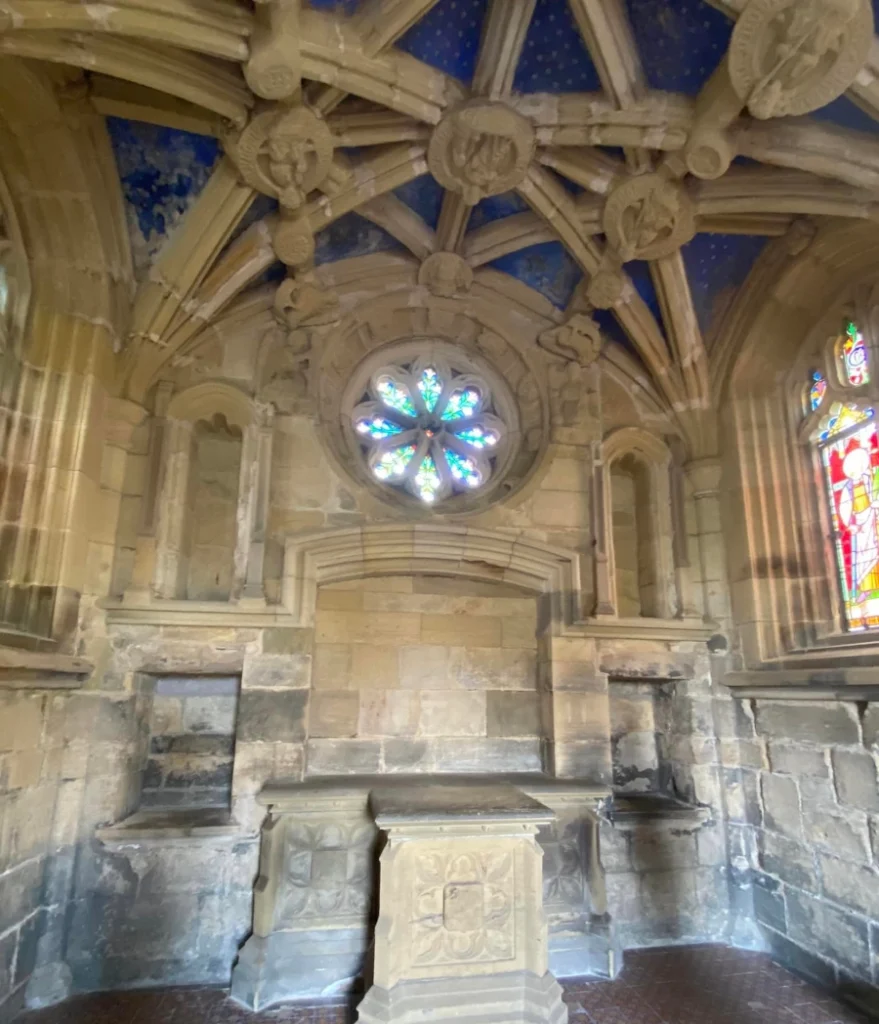
In 1538 Henry VIII began the Dissolution of the Monasteries, taking power from the English Church and reorganising everything in the realm. Tynemouth was no exception to this and the hitherto all-powerful Prior was kicked out, given a pension and told to live in Benwell. All of the literature and wealth of the monastery was confiscated.
The Castle was then set on a programme of modernisation. Sir Richard Lee, Henry’s chief engineer, hired two Italian military engineers, Giani Scala and Antonio da Bergamo, to fortify the headland. We have a map of Scala’s designs for the Castle and the Spanish Battery. Henry wanted the whole area militarised, so there was a long curtain wall enveloping the two places and lots of new gun ports and battlements built, including the main ramparts on either side of the Gatehouse.
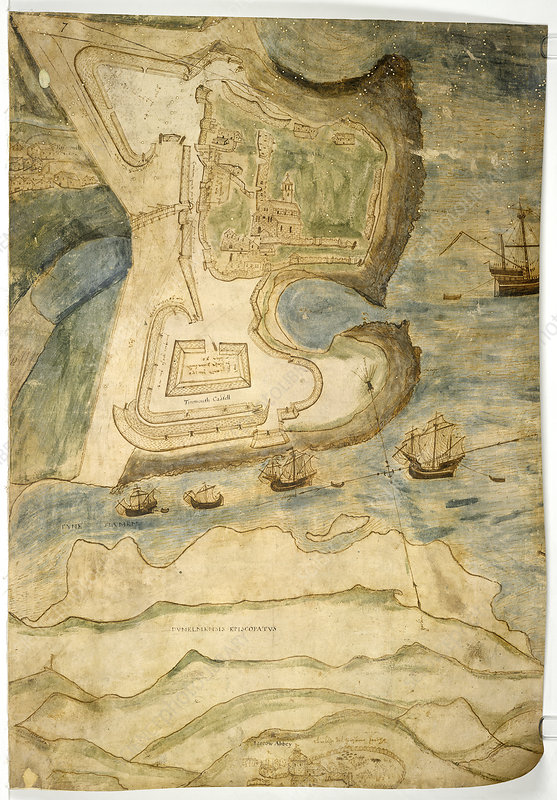
But the Castle was never used or improved to its full potential. There was another early fort at the Narrows of the river mouth where the Low Light and High Light are situated, the first instances of which were also built on the King’s orders at this time. As time went on, this bastion which would later become Clifford’s Fort, became more strategically critical, while Tynemouth Castle was somewhat left to crumble.
A little later in 1564, Henry Percy, the 9th Earl of Northumberland, was born in the Castle and he became its owner. Percy is interesting because he was he was one of the conspirators in the Gunpowder Plot in 1605. He managed to extricate himself from the plotters, but he remained persona non grata for some time.

26. Monk’s Stone
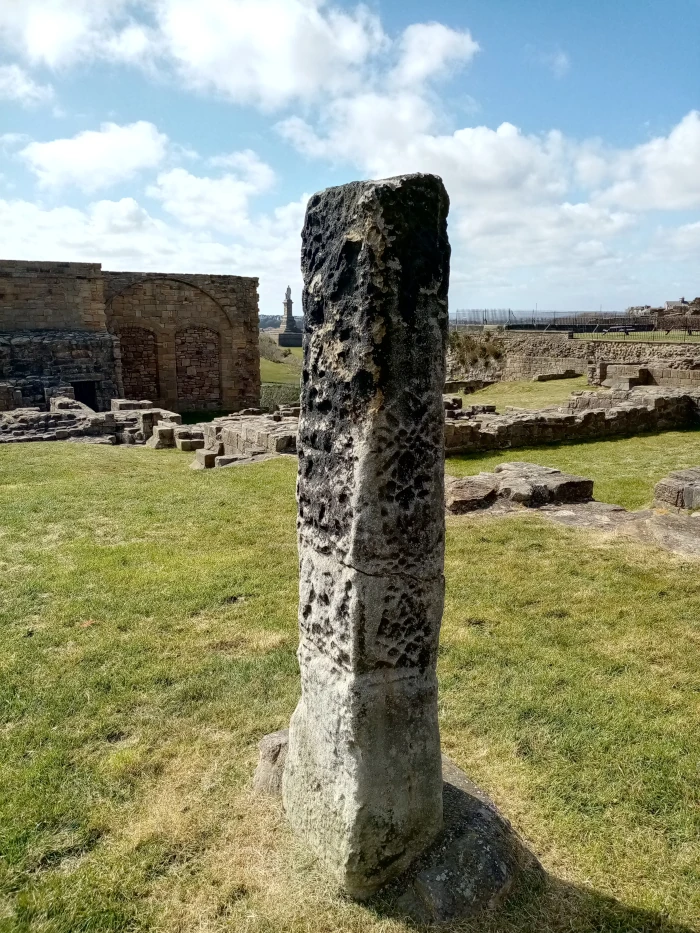
This is an Anglo-Saxon stone that may have originally formed the main shaft of the medieval village cross. There have been other pieces of stone from Anglo-Saxon and Viking times found in the Priory, but the Monk’s Stone is very famous and has a legend connected with it.
There is a faint hunting scene depicted on the stone, which you can view under the correct lighting, and there is also an inscription that states, “O horrid deed to kill a man for a pig’s heed”. The story behind this concerns Lord Delaval from the noble family that lived at Delaval Hall. The tale goes that a monk from Tynemouth Priory stole a pig’s head from the hall kitchen while he was travelling around the area. The head of the family caught up with him on horseback and beat him to death, but this violent act occurred inside the Prior’s land, that is, beyond the boundary marked by what would later be called “The Monk’s Stone”. The mighty Lord Delaval then had to repent for the sin of murdering a lowly monk and doing so on Church ground. He lived the rest of his life in shame trying to make amends for this crime.
It’s worth noting for context that In the old days, the Prior was pretty-much all-powerful in the area. He could try, jail and execute people, he could tax and fine people, he had rights on every shipwreck, and he had bands of fugitives who would be his armed thugs. When felons wanted sanctuary, they could come to Tynemouth and once they were inside the Church lands, they couldn’t be pursued. Tynemouth was holy ground and the Monk’s Stone marked its limit. The stone stood about a mile to the north of the Priory on land that became part of Monkstone Farm near the junction of Beach Road and the Broadway. In 1935 the stone was placed inside the Castle because the farmer wanted it moved.
Another interesting thing about the stone is if you draw a line from the Monk’s Stone to the Prior’s Stone, which stands just off the Black Middens, Lord Collingwood’s Monument sits at the exact mid-point on this line.

